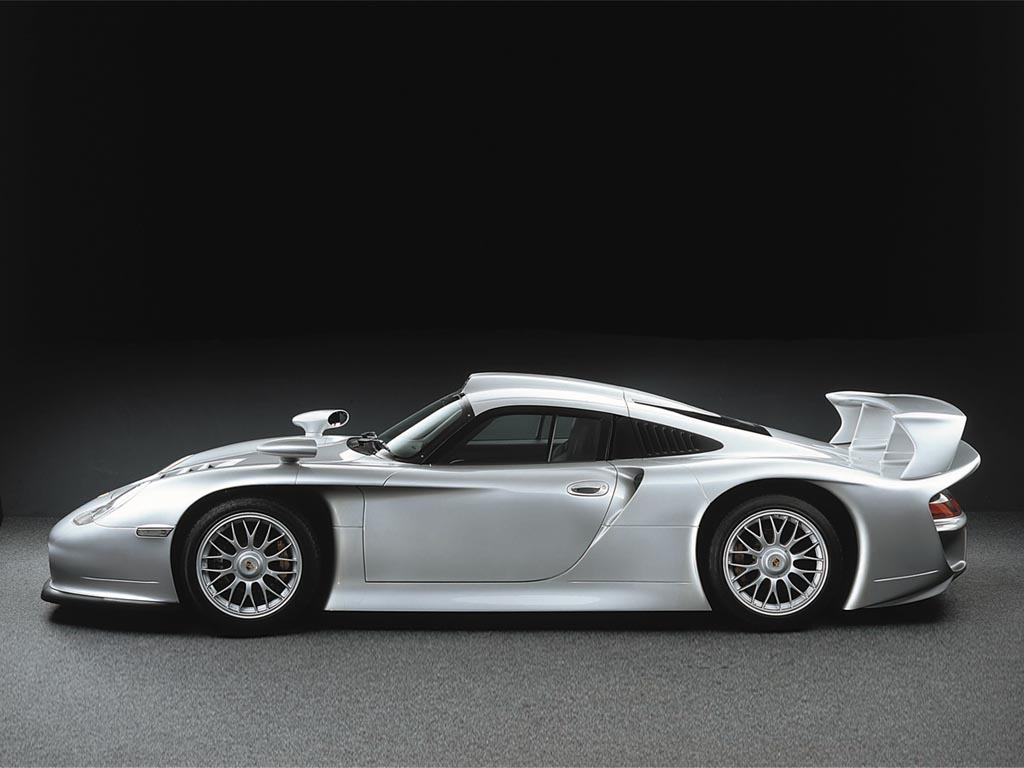1997 Porsche 911 GT1 Straßenversion – Ultimate Guide
Porsche developed two prototype cars, both fully road-legal versions that was 1996 model GT1 Straßenversion cars. The first was delivered in early 1996 to the German Federal Ministry of Transport, Building, and Urban Development for compliance testing, which it passed. The second prototype vehicle is in the hands of a Bahrain-based private car collector Khalid Abdul Rahim. These two cars feature 993 style front headlights.
For 1997, the production car, again dubbed “911 GT1 Straßenversion” – was a run of approximately 20 units which were built in 1997 and featured 996 style front headlights. The majority of the production model was finished in Artic Silver or Fern White, but three cars were finished in unique colors: Polar Silver, Indian Red, and Pastel Yellow. The homologated roadgoing version of the ’97 911 GT1 Evolution racer wasn’t cheap, costing $890,805 upon release. Buyers lined up to buy a street version of the homologated Porsche’s 911 GT1 contender, a car that is one of the most fierce and rare 911s on planet.
Twin-turbochargers were fitted to the M96/80 engine, which had water-cooled cylinder heads. Apparent from the front and rear lights, the GT1 shares many components with its series production counterparts, but puts them together in a more competitive way. Gone is the rear engine layout which isn’t suitable for prototype GT racing, the GT1’s turbocharged flat-six engine sits in front of the rear axle and is supported by chassis tubes instead of the typical 911 rear sub frame.
Apart from the sparse interior, little differentiates the GT1 from the full-on, race-ready counterpart. The homologation regulations demanded that the car complied to both the rules of the road and track. This included comprehensive European regulations which created a golden age of GT1 racing. Apparent from the front and rear lights, the GT1 shares many components with its series production counterparts, but puts them together in a more competitive way. Gone is the rear engine layout which isn’t suitable for prototype GT racing, the GT1’s turbocharged flat-six engine sits in front of the rear axle and is supported by chassis tubes instead of the typical 911 rear sub frame. Sitting behind the engine is a longitudinal six-speed transmission which the rear suspension attaches directly onto.
The GT1 was based on the 993 body shell, but with modified exterior panels and a substantial roll-cage that also supported the engine, gearbox and suspension. This helped Porsche avoid necessary crash testing and reinforced ties to the production cars. But in almost every way, the GT1 was purpose-built race car. It had a carbon fiber body, full width wing, a tiny cockpit and a maximum power of 600bhp was developed at 7,200rpm.
Compared to the GT1s which raced Le Mans, the road-going version had only slight modifications. These changes include a higher ride height, softer suspension, road-going gear ratios and steel brakes which replace the race car’s carbon discs. The engine was only slightly detuned from the race version’s and a complete interior included sport seats and a full dashboard from the 993 line.














